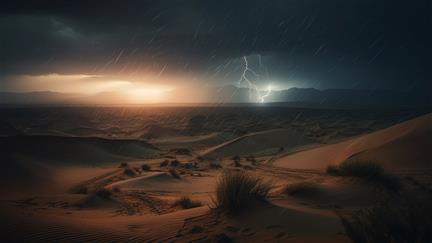
The Patriarch Period
Other evidence situating the Patriarchal narratives in the middle Bronze age include the existence of the Amorites and Hurrians, Nomadism, Climate and Political conditions. Discoveries validating the Patriarchal Narratives in the late and middle Bronze Age include:
AKKADIAN CUNEIFORM TABLETS from the 18th century B.C. which were discovered at Shekhna, an ancient city in Syria. Many tablets contained a specific type of covenant protocol unique to the early 2nd millennium B.C.
The STATUETTE OF THE KING OF MARI from 2400 B.C. was discovered in 1934 at the TELL HARIRI site in the ancient temple of Ishtar. The inscription on it refers to the ancient city of Mari in Syria.
The LAMENT FOR THE DESTRUCTION OF UR and the MB GATE AT DAN/LAISH dated around 1800 B.C. contain inscriptions with city names such as Ur, Haran, Hebron, Sodom, Gomorrah, Laish, Salem (Jerusalem) and Shechem.
The ALALAKH TEXTS from the middle Bronze age were discovered at Alalakh in southern Turkey. They contain the same covenant sealing practice as in Genesis 15:1-18.
The “TA SHASU YAHWEH” inscription meaning “Land of the nomads of Yahweh” was found in a topographical list in an Egyptian temple around 1400 B.C. The inscriptions place these nomads in Moab, Edom and southern Jordan.
Bab ed-Dhra (Sodom?) and Numeira (Gomorrah) are desolate, infertile sites located in the southeast area of the Dead Sea. They show signs of fiery destruction and high amounts of sulfur (bitumen) and brimstone have been found. Excavations at these sites show that the fire started on top of the roofs of the buildings and fell into the structures.
Bullae are small, stamped clay seals with names and insignia impressed on them that attest to Biblical figures and other people living in ancient times. Dr. Eilat Mazar discovered over 200 of these in Jerusalem, and many of them date back to the period of the Prophet Jeremiah. Of those, several relate to biblical figures such as Azariah with the text: “Belonging to Azariah, son of Hilkiah” and Hanan with the text: “Belonging to Hanan, son of Hilkiah the Priest”.
-
ksporl351
5/8/2024
Yes, we can trust the Bible because it contains the inspired Word of God and has been validated by archaeological discoveries and ancient extrabiblical texts.